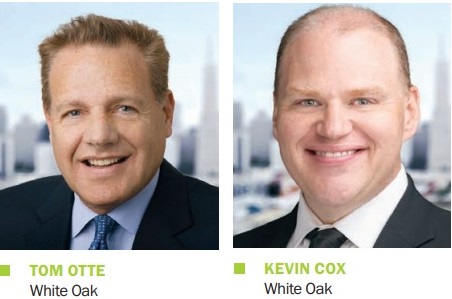- Mazzotta Rentals, Inc. Secures $160 Million Credit Facility to Accelerate Growth and Continue Fleet Expansion
- Empowering or Overshadowing? Balancing Technology and Expertise in ABL
- Empathy from the C-Suite: Michael Haddad’s Lessons Learned From His Self-Run Job Process
- Quasar Capital Welcomes Rob Hydeman as President of Business Credit
- PKF O’Connor Davies Expands Advisory Service Offerings with PKF Clear Thinking Integration
Anatomy of a Deal: Non-Bank ABL Solutions - Maximizing Availability and Flexibility
By Tom Otte and Kevin Cox

White Oak executives detail a complex deal that unlocked substantial liquidity for an asset-heavy borrower in a non-traditional ABL industry.
In today’s uncertain economic climate, companies are faced with a significant rise in interest rates, compressed gross margins, inflationary pressures on operating expenses, and declining cash flow to support working capital needs. Traditional bank financing, whether cash flow or asset-based, can be stressed and severely restrictive in this type of environment, posing a challenge to companies. Banks meanwhile are under internal and external pressures to evaluate portfolio companies, and may not be able to provide the liquidity and support that a borrower needs.
This is where private credit and non-bank direct lenders can step in. Private credit and non-bank direct financing can provide small and medium-sized enterprises (“SMEs”), whether sponsor owned or independent, access to liquidity that is critical to support growth and acquisitions and can help a company through a transition that may otherwise be significantly limited by a traditional bank financing. In this economic and lending environment companies are frequently turning to investment bankers and advisors to navigate the expanding world of private credit. Borrowers considering a move to a non-bank lender are looking for a partner who can be flexible and collaborative, and unconstrained by a rigid, regulatory-based, “credit box” that can leave borrowers and prospects needing more. A non-bank lender may look at the same pool of assets differently than a bank lender and still be able to preserve protections typical for lenders. Asset-based lenders love the velocity and turnover of collateral into cash collections, which can be used to pay down the debt if needed. Companies in asset-heavy but cash fl ow constrained industries can slip between the cracks, as traditional ABL structures favor receivables and inventory over fixed assets and real estate.
These “upside down” borrowing bases can be tricky to navigate, especially in industries that have historically not found much success in ABL, such as construction. Fixed asset-heavy borrowers tend to gravitate towards financing via a term loan, which is typically less flexible and can be problematic if leverage is elevated. However, by strategically including fixed assets in the borrowing base of an ABL, the borrower can be less constrained by leverage requirements, fixed amortization, and excess cash flow sweeps and unlock liquidity from the value of the assets.
Click here for the full article.
